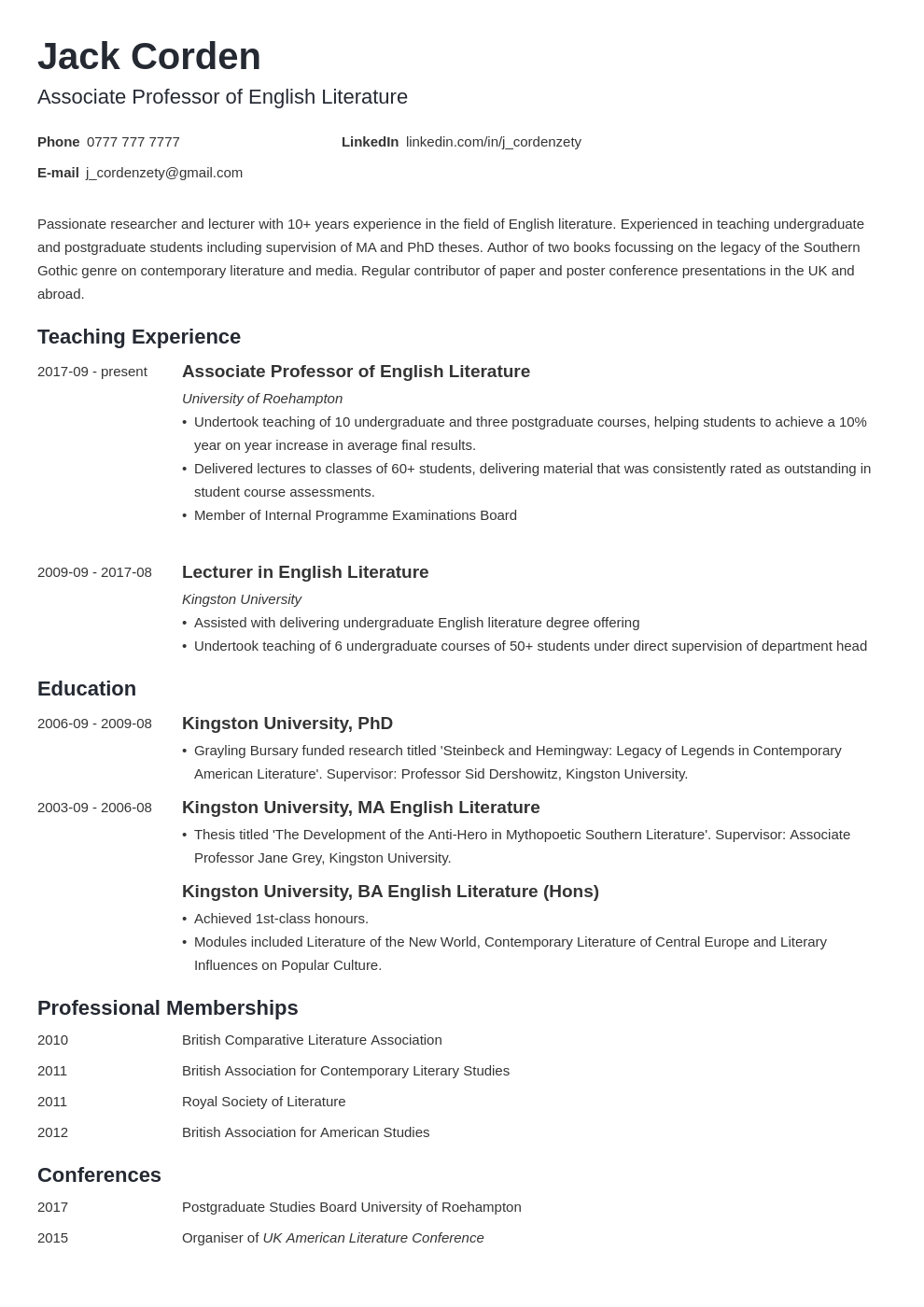HOW TO WRITE A PERFECT ACADEMIC CV [WITH EXAMPLES]
How to write a great Academic CV

LEARN HOW TO CRAFT THE PERFECT ACADEMIC CV.

Table of Contents
Introduction:
When it comes to applying for academic positions, having a well-crafted academic CV is essential. Your academic CV showcases your qualifications, research experience, and academic achievements. In this guide, we’ll walk you through the steps of creating an effective academic CV.
1. Start with a Personal Statement
Begin your academic CV with a concise introductory personal statement. This statement should give a summary of your skills, experience, and career ambitions. Here’s an example:
“Dedicated and passionate researcher with a strong background in molecular biology. Committed to advancing scientific knowledge through innovative research projects. Seeking a faculty position to contribute to the academic community and mentor future scientists.”
2. Include Your Education
List your educational qualifications in reverse chronological order. Start with your most recent degree and work your way back. Include the institution, degree earned, field of study, and dates of attendance. If you have any honors or awards related to your education, be sure to mention them. Here’s an example:
*Ph.D. in Biochemistry, University of XYZ, 2019-2023
Dissertation: “Exploring the Mechanisms of Protein Folding”
Dean’s List, 2021*
3. Highlight Your Research Experience
Academic CVs place a strong emphasis on research experience. Include details about your research projects, including the title, the institution or organization where the research was conducted, and the dates of the project. Describe your role and responsibilities, as well as any significant findings or outcomes. Here’s an example:
*Research Assistant, ABC Research Institute, 2020-2023
Conducted experiments to investigate the role of gene expression in cancer progression
Analyzed data using statistical software and presented findings at international conferences*
4. Showcase Your Publications and Presentations
If you have published any research papers or presented at conferences, include them in a separate section. Provide the title of the publication or presentation, the venue or journal, and the date. This demonstrates your expertise and contributions to your field. Here’s an example:
*Publications:
Smith, J., et al. (2022). “The Role of MicroRNAs in Neurodegenerative Diseases.” Journal of Neuroscience, 45(3), 123-135.
Johnson, A., et al. (2021). “Exploring the Effects of Exercise on Cardiovascular Health.” International Journal of Sports Medicine, 20(2), 67-78.Presentations:
“Advancements in Cancer Research,” International Conference on Molecular Biology, 2022
“The Impact of Climate Change on Biodiversity,” Annual Meeting of the Ecological Society, 2021*
5. Emphasize Teaching Experience
If you have teaching experience, include a section dedicated to it. List the courses you have taught, the institutions where you taught, and the dates. Highlight any innovative teaching methods or positive student feedback you received. Here’s an example:
*Teaching Assistant, University of XYZ, 2018-2020
Assisted in teaching undergraduate courses in Cell Biology and Genetics
Developed interactive lesson plans and conducted laboratory sessions
Received positive evaluations from students*
6. Include Professional Memberships and Associations
If you are a member of any professional organizations or associations related to your field, mention them in a separate section. This shows your commitment to staying connected with your academic community. Here’s an example:
*Professional Memberships:
American Society for Biochemistry and Molecular Biology (ASBMB)
Society for Neuroscience (SFN)*
7. Provide References
At the end of your academic CV, include a section for references. List the names, titles, and contact information of individuals who can speak to your academic abilities and qualifications. Make sure to obtain their permission before including their information. Here’s an example:
*References:
Dr. John Smith
Professor of Biochemistry
University of XYZ
Email: johnsmith@example.com
Phone: 123-456-7890Dr. Jane Doe
Associate Professor of Neuroscience
ABC Research Institute
Email: janedoe@example.com
Phone: 987-654-3210*
Conclusion
Writing an academic CV requires careful attention to detail and a focus on showcasing your academic achievements. By following these steps and including relevant examples, you can create a compelling academic CV that highlights your qualifications and sets you apart from other applicants.


